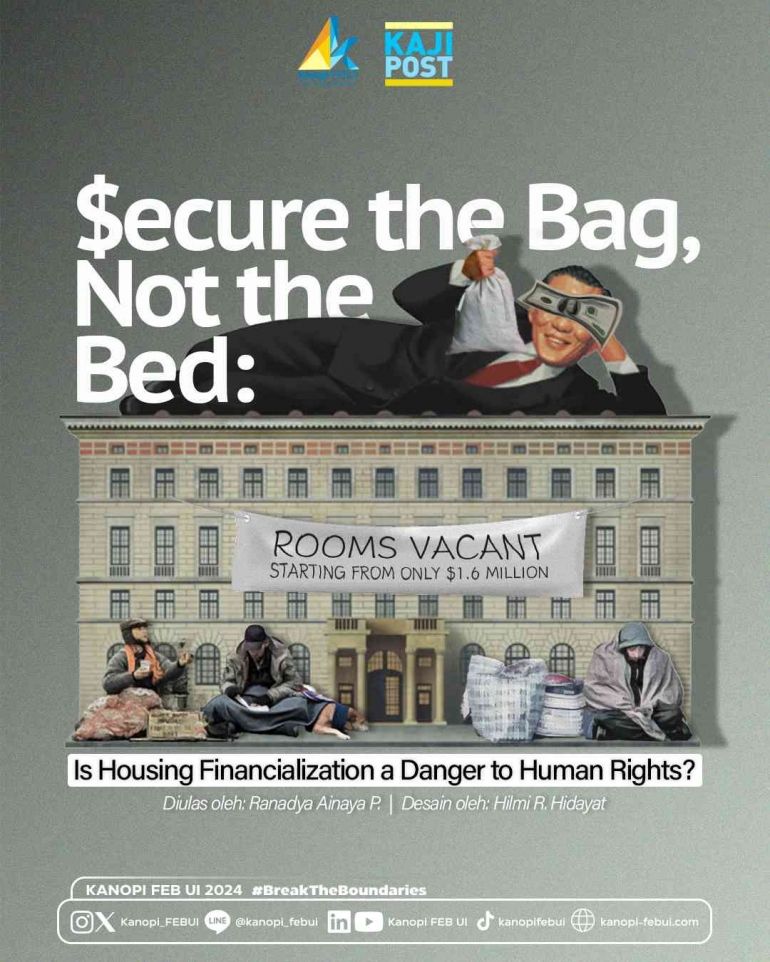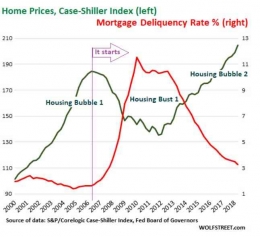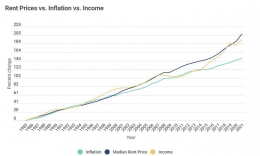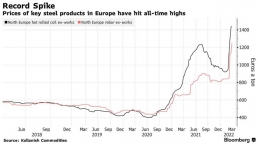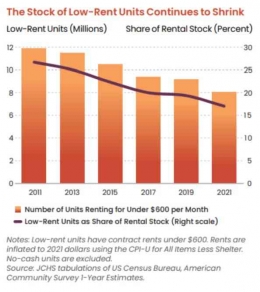The GFC had led to a high number of foreclosures due to people not being able to pay their mortgages, therefore selling their houses. According to Realtytrac, about 2.82 million and 2.87 million foreclosures occurred in the US in 2009 and 2010 respectively. In Spain, 500.000 foreclosures occurred, resulting in over 300.000 evictions between 2008 and 2013 (Leijten & de Bel, 2020). Taking the opportunity, big investors would buy those foreclosed houses cheaply and sell them at a higher price when the economy stabilized. Even globally, this further strengthened the trend of housing as an investment until today, where big corporations or institutions buy bulk houses at a low cost, revamping them, and offering them to the market at much higher rent. An example of this is how, between September 2021 and March 2023, Blackstone—the largest real estate investor in the world—raised the rent prices of an apartment complex in San Diego by 43 and 64 percent, while the California state law only allows an annual rent hike of 10 percent or less. Another example is in Ireland, where financial investors are estimated to increase their rents 4.1 percent higher than other landlords. These two examples demonstrate how it is easier for large property investors to charge an unreasonable amount of rent towards its tenants, even when the rise in rent is not accompanied by a proportionate increase in income.

Ever-Increasing Rent or Unbearable Building Cost?
If renting makes them inferior and only causes loss, why not build a home of their own to be free from the ‘evil’ corporate landlords? Simply, because it is costly to build a new house. Ever since the GFC, the construction industry went into a downward spiral, causing construction companies to be more cautious with their procurement of housing. Furthermore, the cost to build a house is also on the rise due to the expensive cost of building materials. Supply chain disruptions such as the Russia-Ukraine war also worsened the issue, resulting in a construction labor shortage across European countries and an increasing price in building materials like steel globally.

With fewer houses being built and the cost of building a home soars, the market supply of houses cannot meet the demand. As the fundamental economic theory says, when supply is less than demand, the price went sky-high. Then, if houses are scarce, isn’t it good to let corporate investors thrive in the market to increase the supply?
There Are Homes, but Why Are They Empty?
The common argument to support corporate investors is because housing construction costs are high, wealthy investors are able to provide more houses that would not have been built unless they got involved in the market. Though they do add more housing supply, the argument misses the part where driven financial actors, like large corporate investors, respond to global capital rather than local housing needs, hence they are more likely to invest in expensive luxury housing than housing for low-middle income households (Leijten & de Bel, 2020). One of the reasons is because luxury housing grants them a higher profit margin. This trend is echoed by the figures in Figure 4, where we can see that with the example of 2018, 87 percent of all large-scale apartment buildings completed in the first half of 2018 in the US are high-end.

Another report from Harvard’s Joint Center for Housing Studies in 2023 also supports the claim, whereby US multi-family rental construction are at a decades-long peak, the high rent being charged make them unaffordable to many households. As can be seen from Figure 5, the report also shows that from 2011 to 2021, the trend for stock of low-rent units has been declining consistently, indicating that the aforementioned peak in rental construction does not cater to the low-income market.









